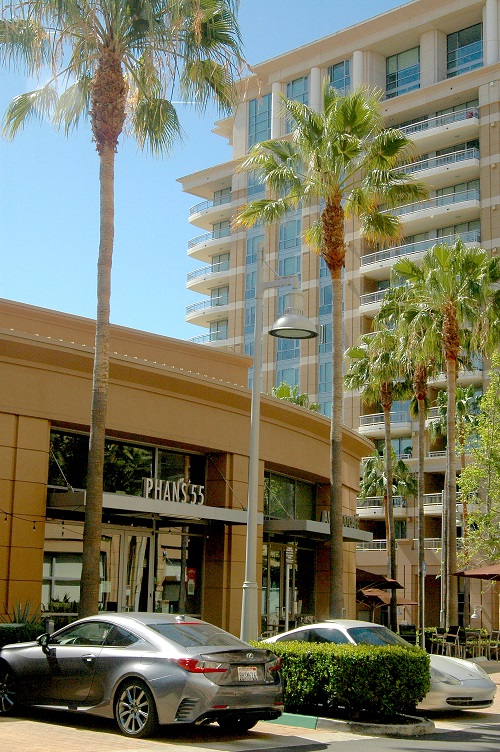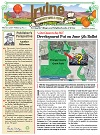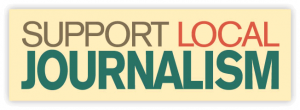How IBC Became an Imperfect Urban Island in a Suburban Area
This is the second of a three-part series on the Irvine Business Complex, or IBC, and the unique opportunities and challenges it offers those who work and live there … and to the City as a whole.

High-rise and mid-rise residential complexes often include street level shops and restaurants
The Irvine Business Complex (IBC) as it exists today is the result of five decades of shifting economics and revised and unrealized planning goals.
What is now the IBC — the vast area between Jamboree Road and John Wayne airport — began as the “Irvine Industrial Complex West,” and was one of the first areas of the City to be developed. As part of the 1960s project to create UC Irvine, the University’s lead architect, William Pereira, and Irvine Company planners mapped out a new community to be developed around the campus. It included greenbelts and distinct residential, commercial, recreational and industrial districts. The Irvine Industrial Complex West was one of the industrial districts developed in the late ’60s, concurrently with Turtle Rock, University Park and the other original residential villages that incorporated in 1971 as the City of Irvine.
The Irvine Industrial Complex West was originally intended to be solely industrial and commercial, providing a job base for the new City. But as the nation’s economy evolved in the 1980s and ’90s, manufacturing declined and the new tech sector rose to prominence, driving business development and office construction in the area. By this time, the area took on the name Irvine Business Complex or IBC.
Meanwhile, soaring housing prices drove high demand for new residential development, and made residential projects in the IBC far more attractive for developers and investors. In 1992, the City adopted planning changes for IBC that included large apartment buildings and high-rise residences with a cap of 3,896 units.
Economic pressures continued to build, however, and in 2005 the City began a wholesale review of its approach to IBC. The City brought in consultants, held public meetings and developed new data on the area. That culminated in 2010 with the adoption by the City Council of a new Vision Plan for IBC. Changes in the Irvine General Plan associated with the Vision Plan effort raised the residential cap to 15,000 units.
The plan offered five “Vision Elements” or key concepts:
- Protect the IBC existing job base — nearly 100,000 workers per day
- Develop mixed-use areas that include office, commercial and residential
- Provide transportation, including pedestrian connectivity
- Create usable open space
- Develop safe, well designed neighborhoods
The Vision Plan embraced the concept of an “urban village” in the IBC, with many suggestions for improving walkability in the area, such as landscaped parkways and sidewalks and new parks and open spaces, including a proposed “Creekwalk” linear park along the San Diego Creek.
The Vision Plan also called for changing the street grid to have smaller blocks as part of new development. It also endorsed a system of trails along former railroad rights of way and pedestrian bridges over Jamboree, improved bicycle circulation, and many other ideas for creating a more vibrant and people-friendly urban environment.
Virtually none of these ideas were acted upon in the years following the Vision Plan’s adoption. It was revised in 2016 and 2017, with some updating and new data, but again no action on the ground. A multi-million-dollar park fund assembled from developer fees continues to sit unused. The Creekwalk is still just an idea, and old railroad rights-of-way still feature rusty tracks and weeds. While one pedestrian bridge has been approved and is nearing construction (on Jamboree at Michelson), walkers and bicyclists continue to take their lives in their hands crossing or pedaling on IBC’s streets.
So, is this the IBC’s fate? A checkerboard of residential and business developments with no connectivity, no mobility, no identity? Maybe not. We’ll look at that question in the third and final part of our series.
- Councilmember Tammy Kim Attempts to Block Surplus Funds Being Used to Support School & Family Programs - July 23, 2024
- Pretend City Children’s Museum Coming to the Great Park - July 21, 2024
- Mega-Warehouse Development in Irvine - July 20, 2024



